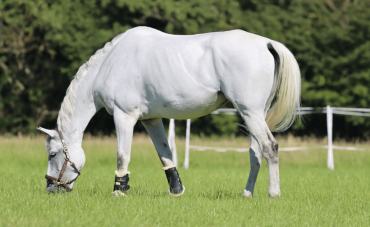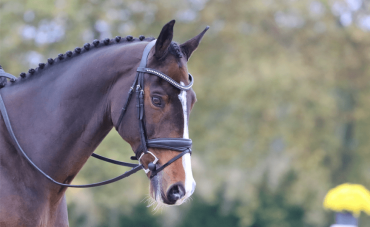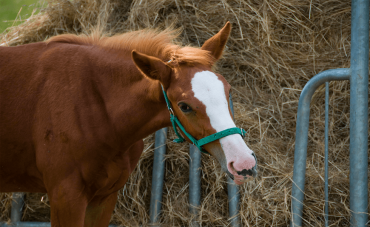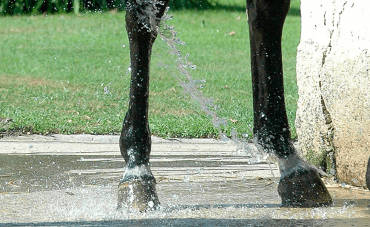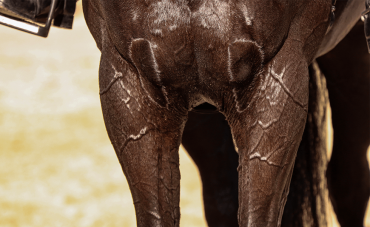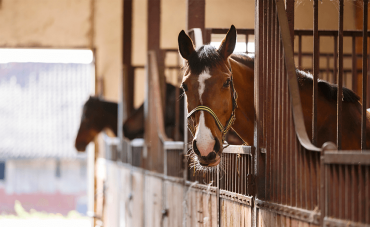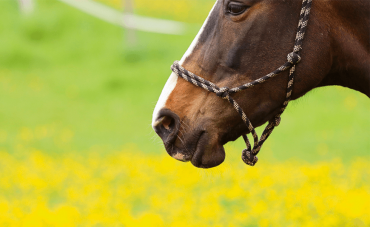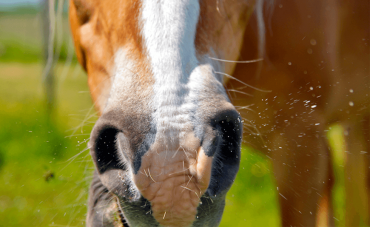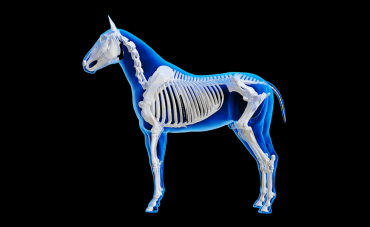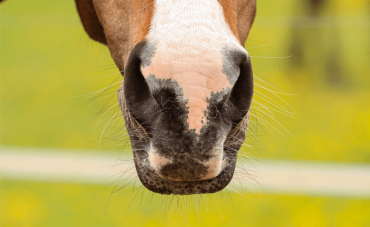All riders know the saying "no feet, no horse". Indeed, the particular structure that is the horse's foot is directly linked to its well-being. Whether you are a competition rider or the owner of a retired horse, the good health of your horse depends on the good health of its feet. We suggest you take a look at the horse's feet...
Reminder on the anatomy of the horse's foot
When we talk about the horse's foot, we mean the last part of the limbs. This includes of course the hoof but this part is only the "end" of the horse's foot and constitutes the barrier between the internal structures and the outside.
Indeed, under the hoof we find different types of tissues (tendons, bones ...) as well as an important blood network.
As you can see, the anatomy of the horse's foot can be approached in different ways. Let's review the external structures and therefore visible to the naked eye and then the internal structures.
The exterior of the horse's foot
The main structure that can be seen on the outside of the horse's foot is of course the wall, which is the "shield" for all the structures found on the inside of the foot. As for humans, this is the "nail" of the horse.
When the horse's foot is on the ground, you can therefore only observe the wall, which is divided into different parts (toe, quarter and heel).
The growth of the wall is from top to bottom and is about 1cm per month. This can vary depending on the breed, the individual and even the season. It therefore takes a long time to renew the entire hoof wall.
If you lift your horse's foot, you will find other structures. The sole with the fork in the middle (V-shaped structure) and which is framed by the bars and the lateral gaps. Unlike the wall, these different elements will grow thicker. The heel of the horse ends with the gloma. The part that connects the wall and the sole is called the white line.
The inside of the horse's foot
If the hoof is the equivalent of our fingernail, the internal structures can be similar to a finger. Thus one will find at the bone level of the phalanges with the number of two (average phalanx and distal phalanx). It is mainly the digital phalanx (third phalanx) that we find inside the hoof but also a little of the middle phalanx (second phalanx). In addition to that we find another bone, the small sesamoid or navicular bone.
Other softer tissues form the inside of the foot such as cartilage for example, ensure the proper functioning of the foot, whose main role is to absorb "shocks" but also to ensure good resistance to stress.
The horse's foot is very mobile and this is due in particular to two tendons (flexor and extensor) which provide the link between the bones and the muscles.
Finally, inside the horse's foot there is a large blood network that supplies the foot and its structures with all the necessary elements (nutrients, oxygen...)
The problems of the horse's feet
As we have seen, the horse's foot is a relatively complex structure. This complexity implies that a large number of disorders of different types and severity can affect the foot.
Before talking about pathologies, it is important to note that the horse's environment can be a source of aggression on its feet. For example, the outside of the foot (wall, frog, sole, etc.) will be sensitive to weather conditions. Indeed, the latter directly influences the ground, and the humidity or dryness of the latter can have direct repercussions on the foot.
Let's now see the main disorders that you may encounter regarding your horse's foot:
- Sandcrack: it is characterized by a crack in the wall which generally starts from the bottom of the foot and goes up vertically. In the most serious cases, cracks can take the entire length of the wall. When it is not too big, your trimmer will create a small crack perpendicular to the other to prevent it from going higher. In cases where cracks reach up very high, it can be the cause of overpressure. In this case, a suitable paring/fixing will be necessary to try to remove the pressure on the affected area and staples can be placed to limit its spread.
- Bruised sole: a hematoma located under the sole. It is generally related to an impact (stone...) but can also be the consequence of pressure related to a problem of plumbness. If it is not generally the cause of a severe lameness, if it is not treated it can become an abscess.
- The abscess: an inflammation within the hoof due to a bacterial infection. A pocket of pus forms and will cause an overpressure at the origin of an important pain.
- Seedy toe (White Line disease): It is a detachment at the level of the white line. It can lead to the entry of pathogens between the wall and the flesh. It is often diagnosed at the time of trimming because does not necessarily causes lameness. To determine the importance of the anteater it is essential to make an X-ray. Your veterinarian will then suggest local treatment to avoid any infection. To make the anteater disappear, it will be necessary to wait for the wall to grow back, which can take a long time.
- Laminitis: Laminitis corresponds to an inflammation of the lamina which swells and modifies the "connection" between the foot bone and the wall. It is a very painful pathology for the horse.
- Navicular syndrome: Navicular (or podotrochlear) syndrome is related to damage to one or more structures of the foot (navicular bone, podotrochlear bursa, flexor tendon, etc.)
- Rotten frog: a classic winter condition, it is mainly related to humidity. It leads to the development of germs that progressively "damage" the frog, which can get detached, cracked, etc. It is important to treat it because it can lead to an infection or an abscess. The care is quite "simple" but it requires the horse to keep his feet dry to be effective (which is not always easy)
- Puncture wounds: This expression is used to designate any damage to the foot caused by a pointed object (often metallic such as a nail). The consequences will depend on the area where the object enters and especially on the depth with which it enters. If the object has only entered the surface, it is not very serious, whereas if the object has gone deeper, it can lead to damage in the internal structures (bones, tendons...) If you find your horse with an object stuck in the foot, you must call your veterinarian before removing it. He will then be able to make an X-ray to precisely detect the affected areas and adapt the handling.
- ....
If you notice any defects in your horse's foot, talk to your veterinarian and/or farrier as soon as possible in order to take care of it.
If your horse's feet are not in good health, his locomotion will quickly deteriorate, which can have serious repercussions on his sporting career or simply his daily life.
Protecting your horse's feet
Whether your horse is shoed or not, the first thing to do to take care of its feet is to have it regularly seen by a trimmer or a farrier.
In addition to maintaining the wall, they are the best professionals to regularly monitor your horse's balance.
In between visits, it is important that you maintain your horse's feet according to its needs.
Don't hesitate to ask your veterinarian for advice if necessary. He will also be able to give you some advice and take into account a possible foot problem in the follow-up of your horse's health.
Remember to clean your horse's feet as regularly as possible. Whether he lives in a stall or in a pasture and whether he is barefoot or shoed, dirt (manure, stones...) can accumulate. In addition, when cleaning the feet, you can take a closer look at them and check for the presence of holes or other small wounds.
Depending on your horse's feet and the season, it may be worthwhile to apply a care product such as grease or oil to prevent the wall from breaking or to keep the foot supple.
Food supplements can also be used to support the horse's foot. Indeed, supplements based on Biotin, Zinc, Methionine will help support the growth of the foot. The wall will thus be of better quality, allowing the hoof to play its role of protecting internal structures and cushioning correctly.
If in doubt, ask your farrier or veterinarian for advice on the choice of products and/or their frequency and duration of use.

